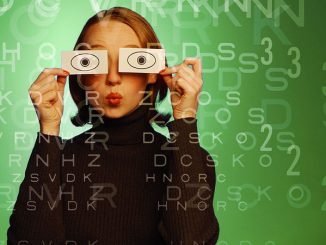
Sometimes I like to imagine what it would have been like to teach Catholic faith formation to either a famous or a fictional character. Recently, I thought to myself, “What would a catechist do if a young Mr. Spock showed up as a student in religious education class?” Of course, you remember Mr. Spock, the fictional character from Star Trek, who was half-human and half-Vulcan: an alien species that operated solely on logic and eschewed emotion. In fact, Mr. Spock is best remembered for using the phrase, “most illogical,” to criticize any decision or action based on a “gut feeling” as opposed to logic and reason.
Well, the truth is, many of us have little versions of Spock in our faith formation classes right now: young people whose learning style is logical/mathematical. Previously, I have posted about learners who are visual, auditory, musical, or kinesthetic. So, what does it mean to be a logical/mathematical learner? It means to be someone who likes to reach conclusions based on the scientific method, involving hard facts and numeric data. Such students seek precision and need rational/logical explanations to satisfy their curiosity. They like to ask questions, analyze problems, develop strategies, and find solutions. They enjoy looking for patterns and learn best when things follow a logical sequence (such as Old Testament chronology or Church history chronology).
Why is it important to know about and address the needs of these logical/mathematical learners? Because they are some of the first children who decide to leave the Church! Research is revealing that children as young as 10 years of age are rejecting the Catholic faith, because they find it to be in conflict with science. This is unfortunate, because, while the Church has been guilty at times of portraying science as an enemy, in truth, some of the greatest advocates of science were devoutly religious (including the scientist who formulated what came to be known as the Big Bang theory: a Belgian Catholic priest named Georges Henri Joseph Édouard Lemaître, who was an astronomer and physicist). That being said, there is much that science cannot measure or explain. Science will never be able to explain the meaning of a work of art, poetry, or literature. Science cannot define or explain beauty. Science will never be able to define goodness or joy. Science will never be able to explain the purpose of a human life. Science cannot explain what makes something funny or sad. Science cannot define what constitutes true love.
While science studies that which is rational and verifiable, this does not mean that faith is irrational or that faith experiences are unverifiable. That which is mystery isn’t unknowable but rather “infinitely knowable.” Our five senses are limited; they inform us of only a very small fraction of what we call reality. That which is unseen or invisible is not to be equated with imaginary. A true Catholic vision recognizes that both the seen reality (the visible) and the unseen reality (the invisible) are real; they do not exist side-by-side but are intimately connected and intertwined in the multilayered reality that is God’s creation. But I digress!
The fact is, Mr. Spock, who was half-human and half-Vulcan, would have been quite at home with the Catholic faith—that is, if he were taught in a manner that helped him to integrate his insatiable Vulcan need for logic and reason with his equally insatiable human need for meaning encountered through love, instead of seeing them as perpetually and irrevocably in conflict with one another.
Here are some tips to engaging logical/mathematical learners:
- Use games and puzzles.
- Integrate timelines into your teaching, especially when covering Scripture and Church history.
- Encourage learners to begin a “collection” of “artifacts” related to the theme you’re teaching.
- Direct learners to classify or categorize.
- Propose problems that need solutions.
- Provide tools, such as blocks, for building models.
- Make Advent calendars.
- Look for patterns in Scripture stories.
- Engage learners in finding books, chapters, and verses in the Bible.
- Highlight famous Catholic scientists and mathematicians.
- Encourage learners to develop charts and graphs.
- Create syllogisms.
- Encourage outlining.
- Use graphic organizers.
- Decipher codes.
- Do experiments.
- Require some research on a topic.
- Incorporate field trips.
- Empower learners to organize a task.
What others ways do you know to engage logical/mathematical learners?
Explore active-learning opportunities for all learning styles in the Finding God: Our Response to God’s Gifts program.





This is a wonderful article. I used to spend the first week of Physics discussing the nature of science: What is Science? This helped overcome the tending view that science provides correct, logical answers based on pure reason to all the questions in life. Adolescents particularly like to discuss love and the suggestion that it involves a rather large leap of faith. Thanks.
Thanks for sharing your experience and insights, Peyton!